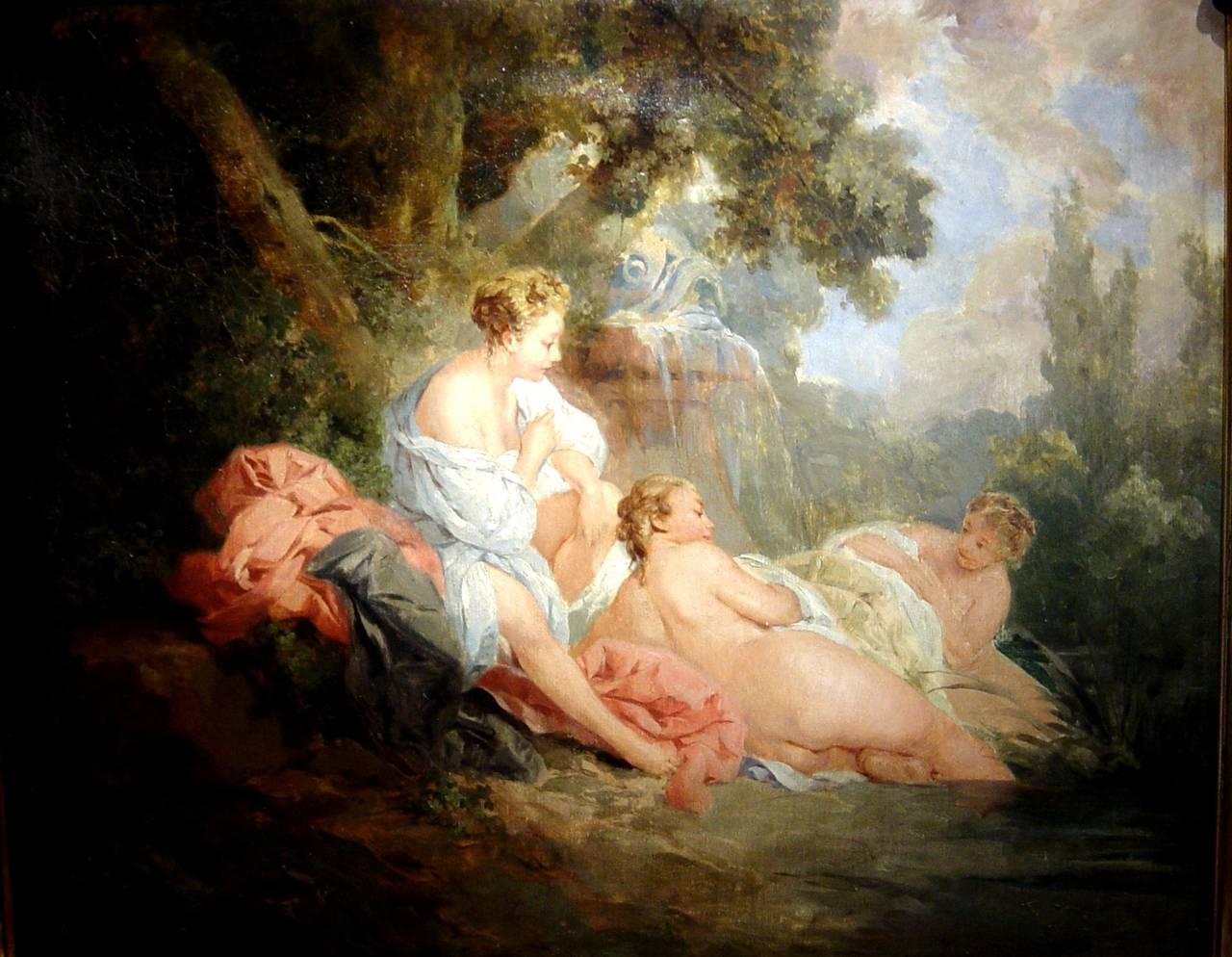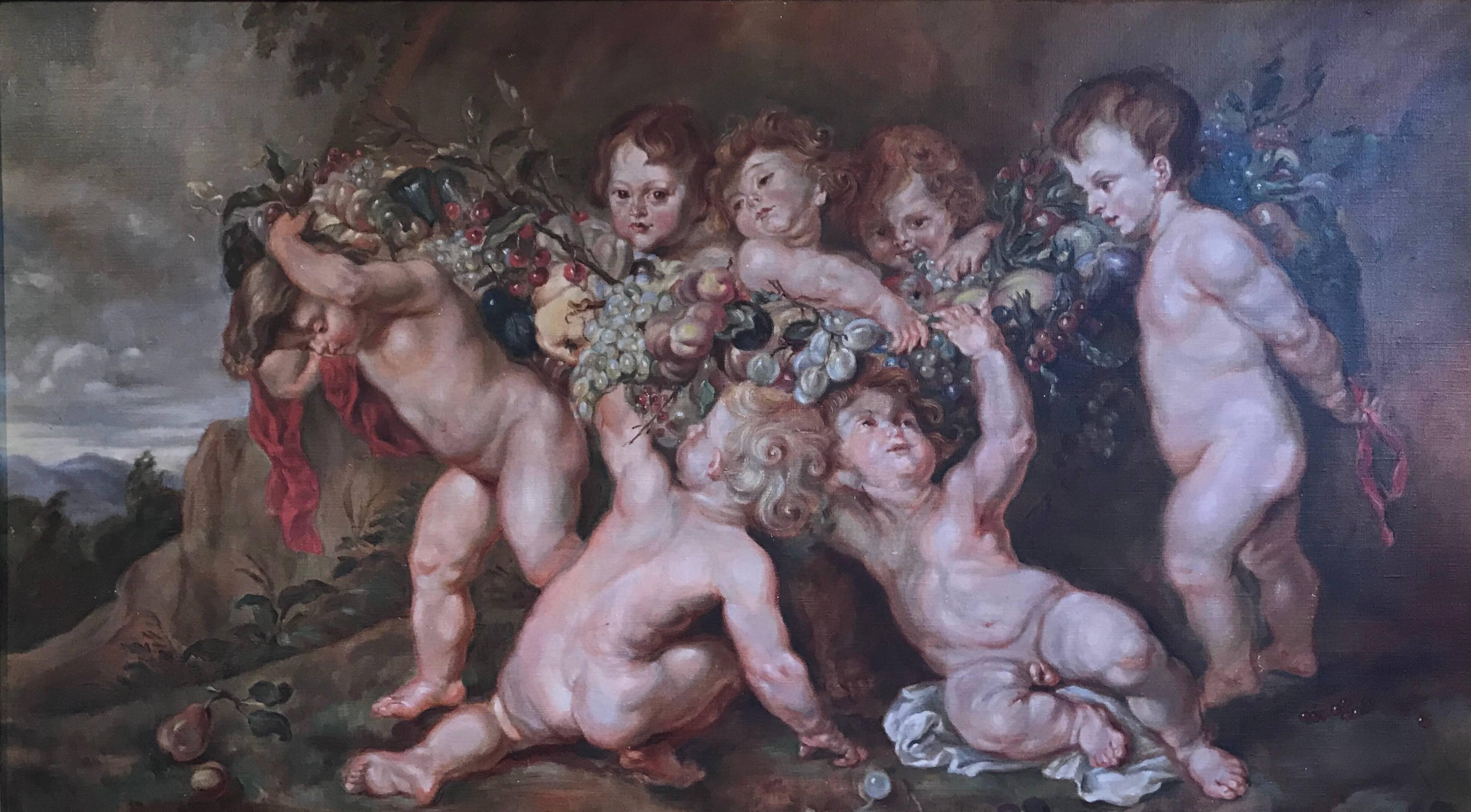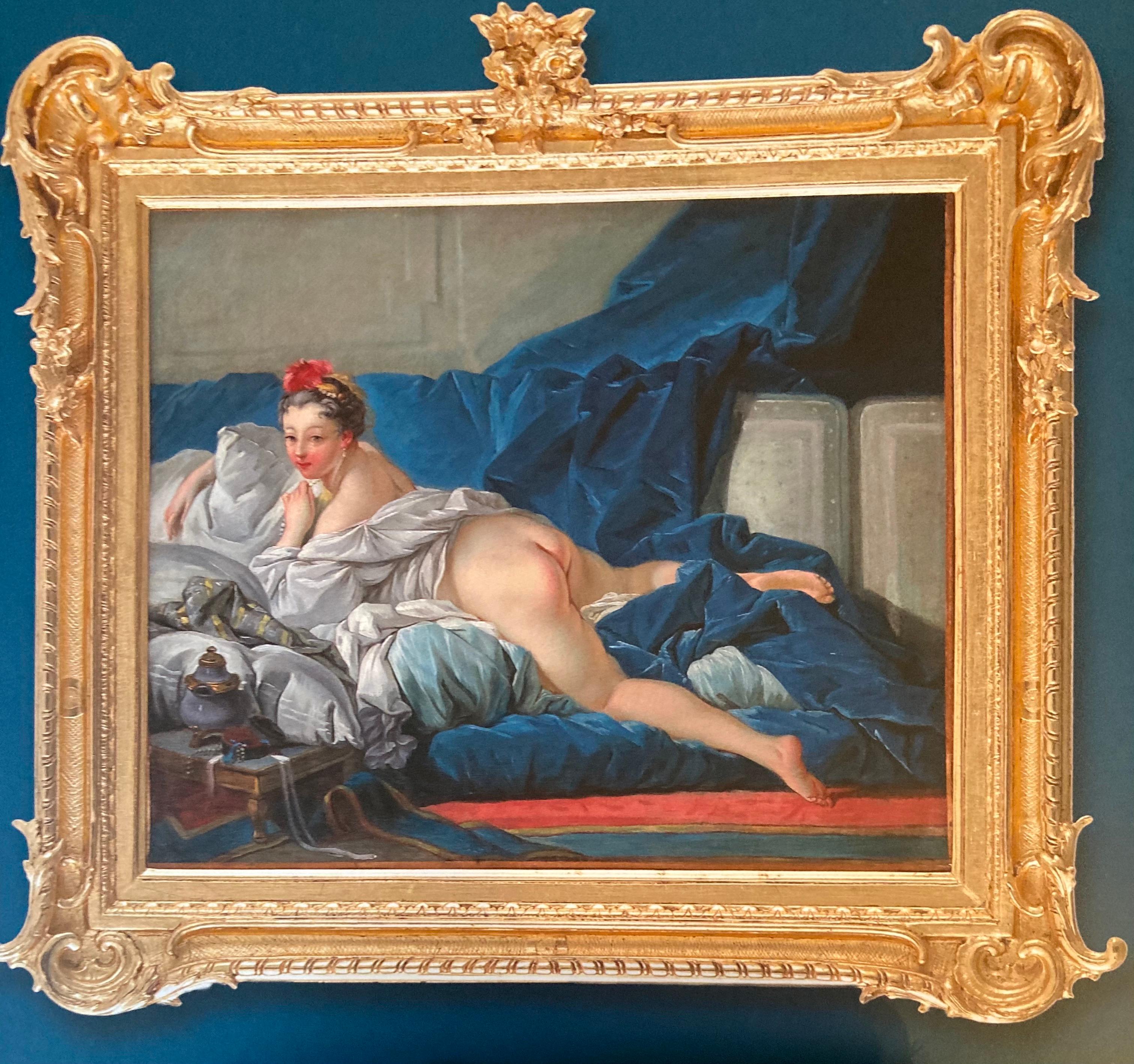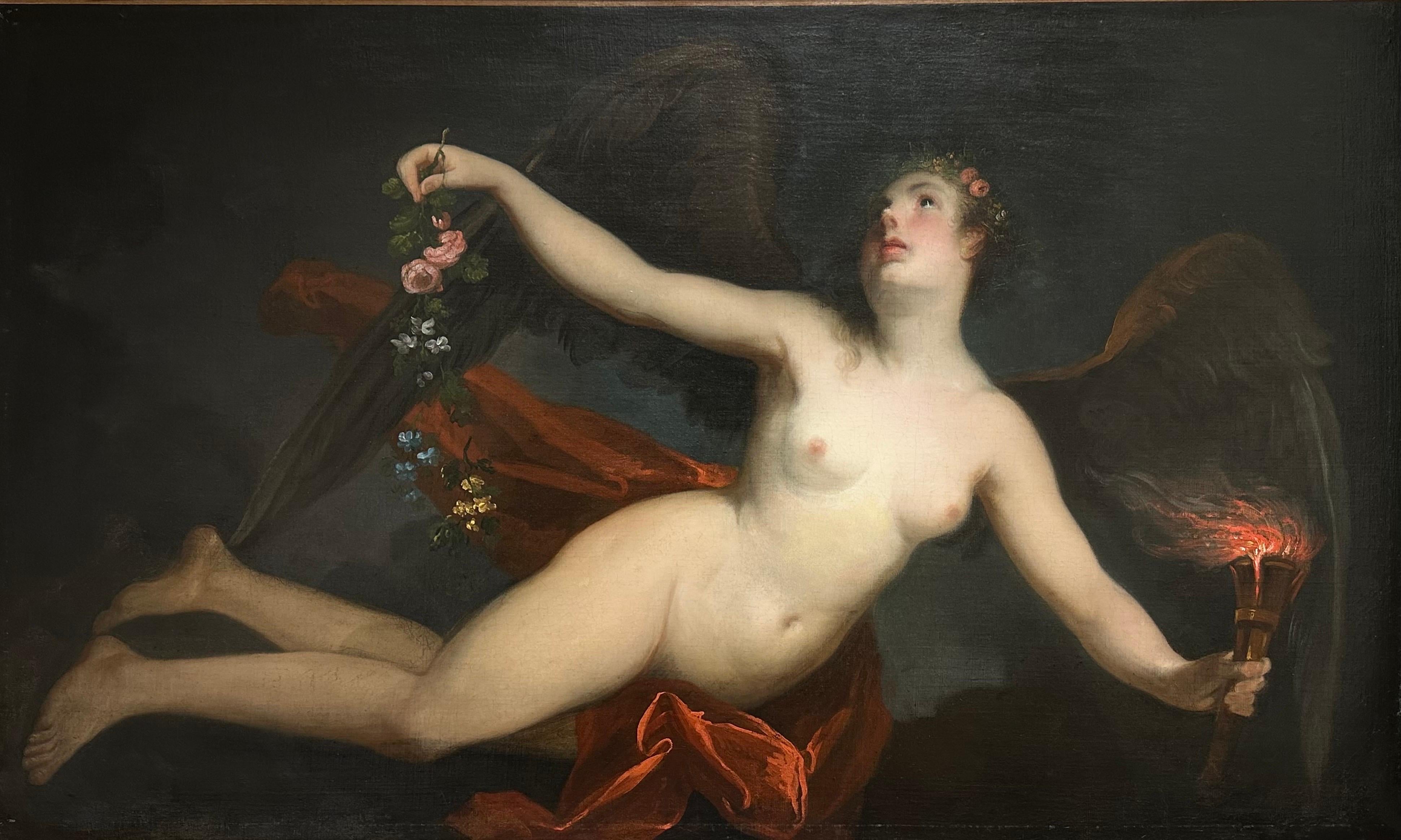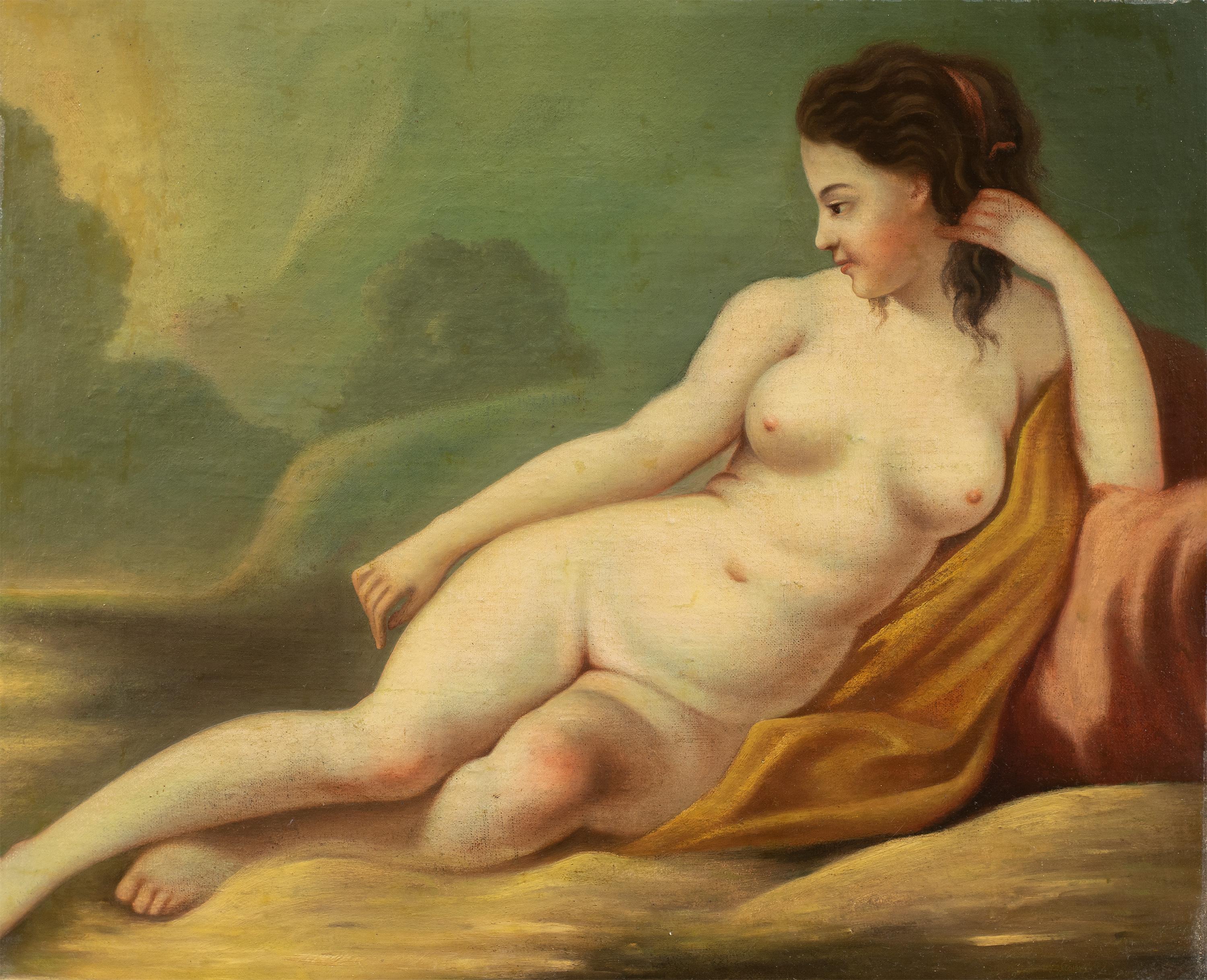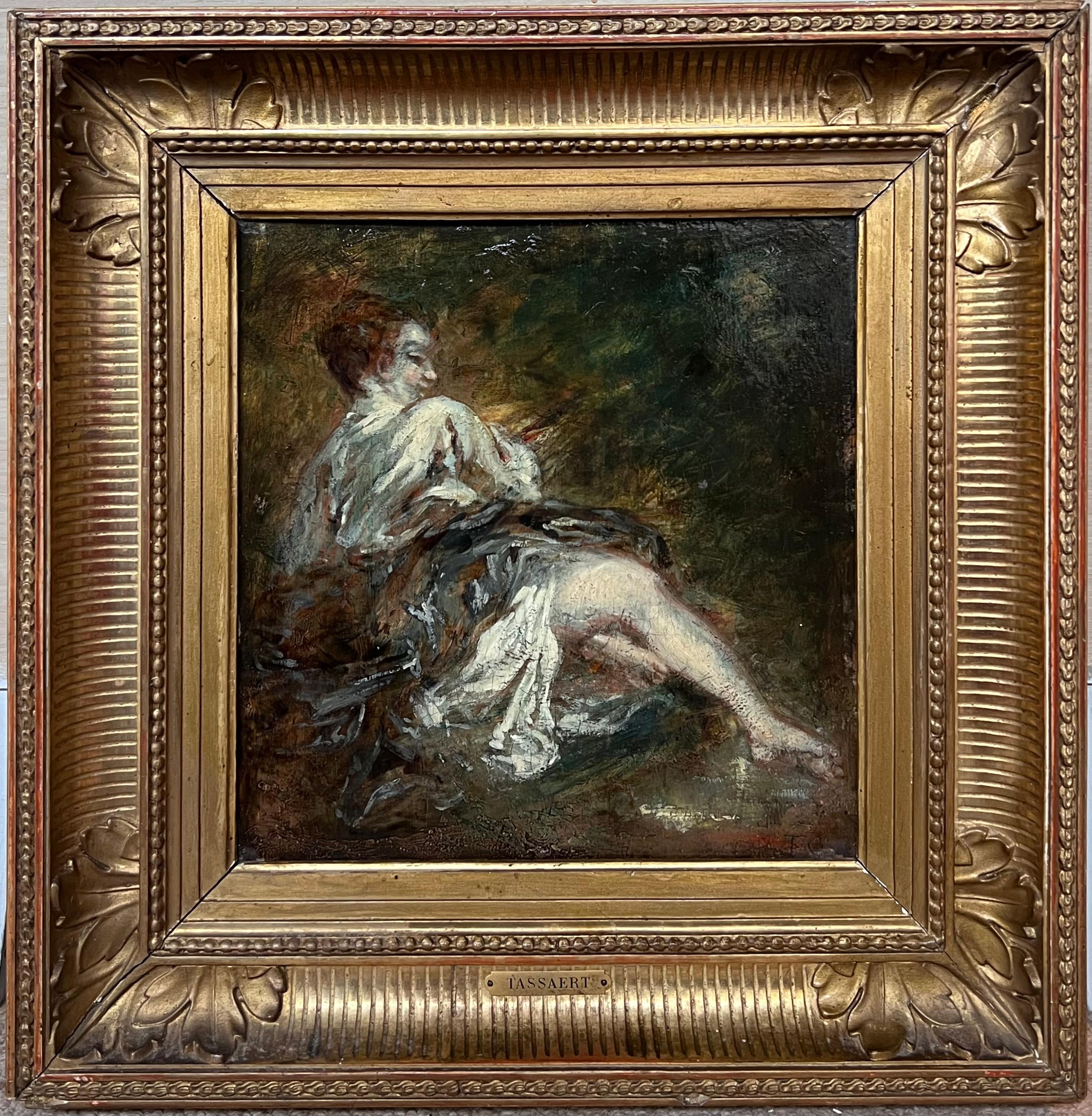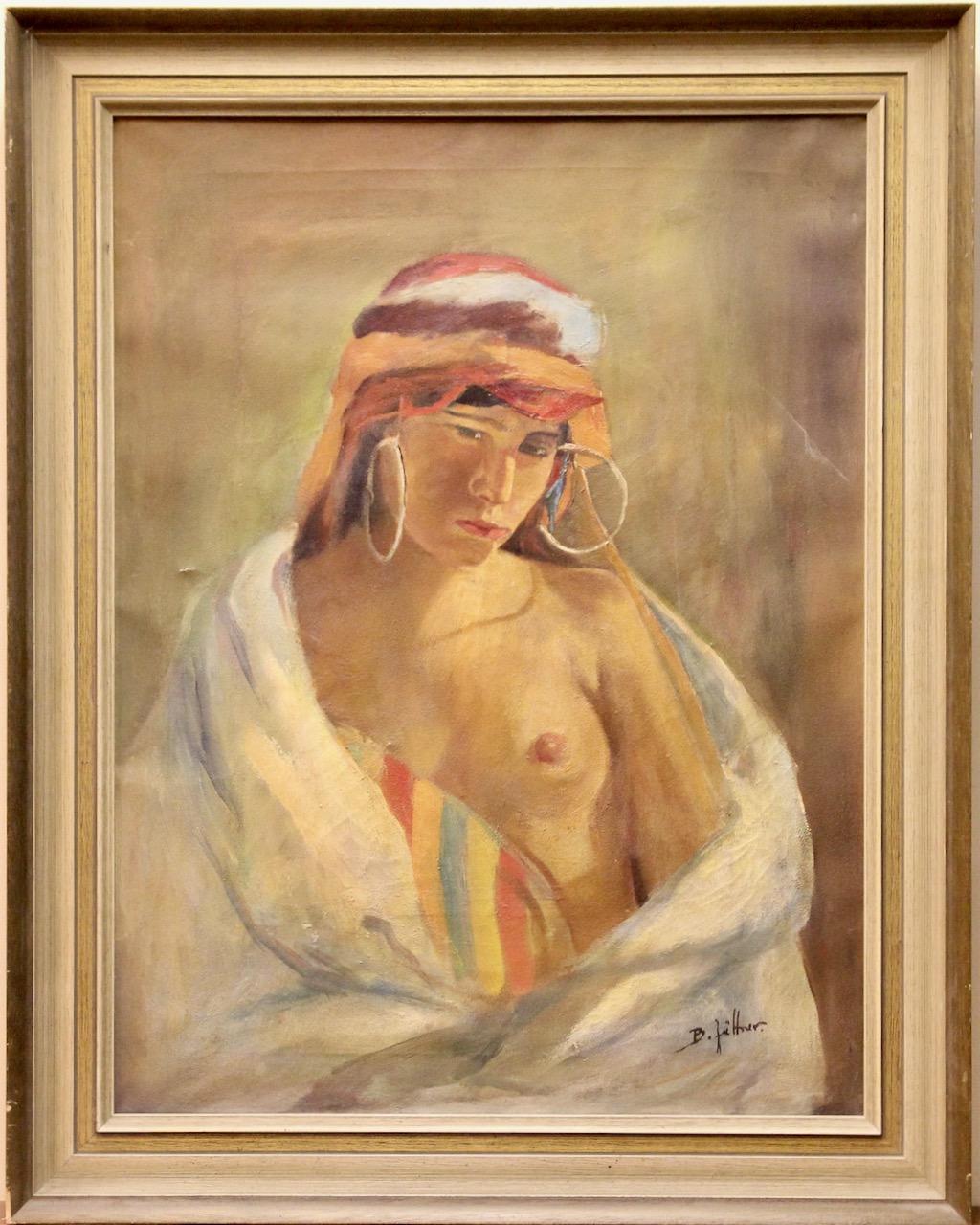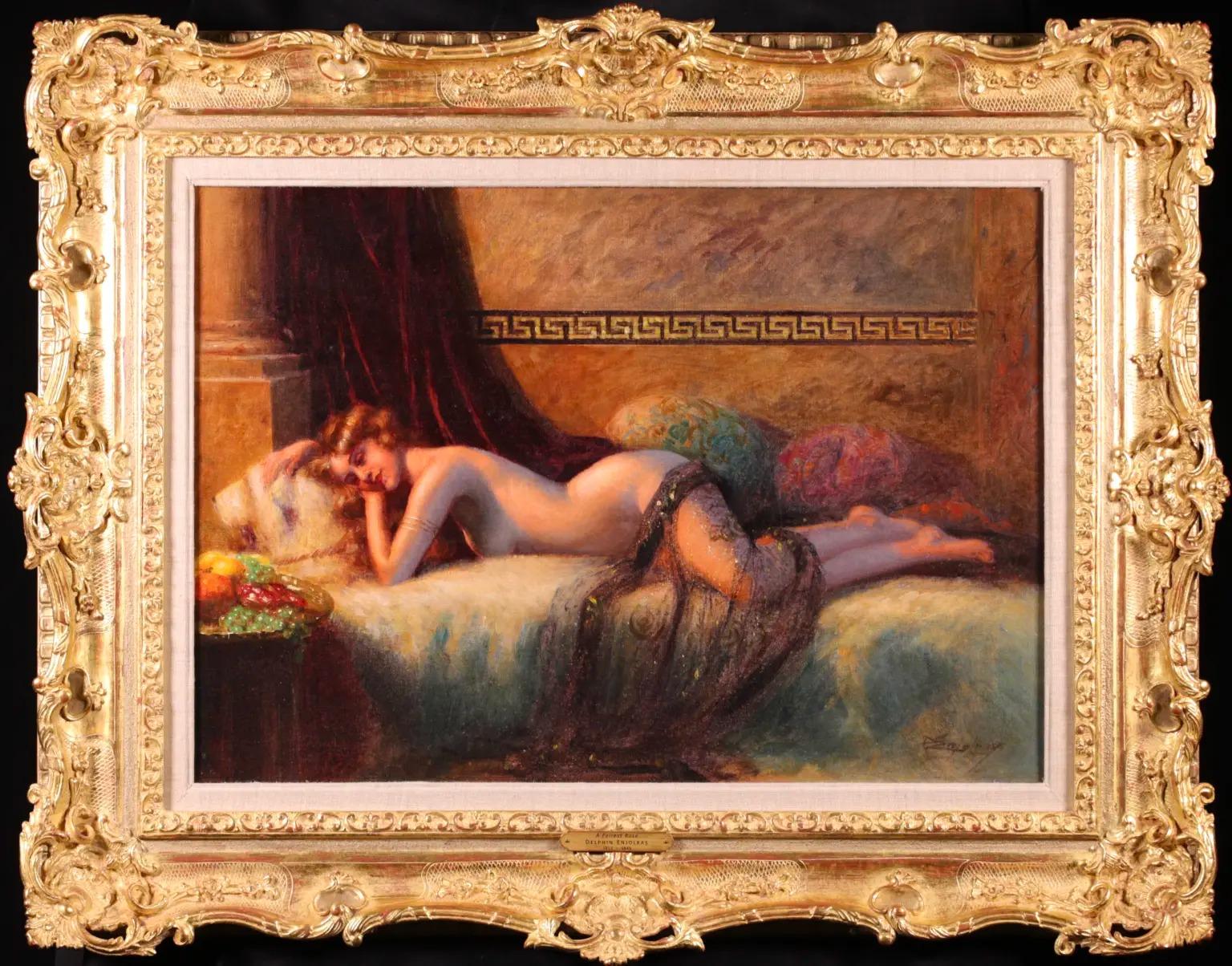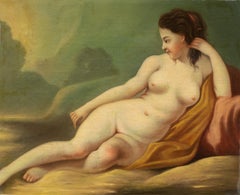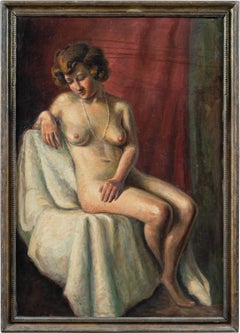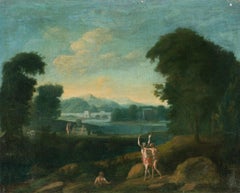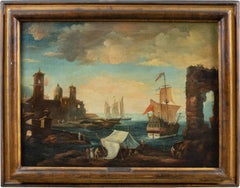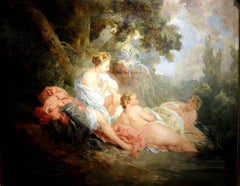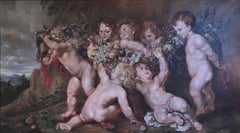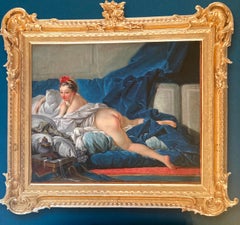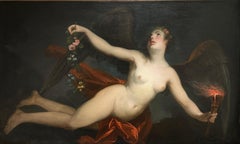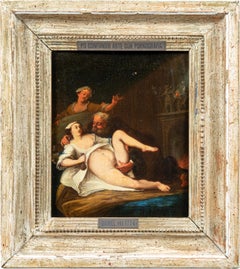
Rococò painter (Venetian school) - 18th century figure painting - Erotic scene
View Similar Items
Video Loading
Want more images or videos?
Request additional images or videos from the seller
1 of 17
UnknownRococò painter (Venetian school) - 18th century figure painting - Erotic scenec.1770
c.1770
About the Item
- Creation Year:c.1770
- Dimensions:Height: 19.49 in (49.5 cm)Width: 21.66 in (55 cm)
- Medium:
- Movement & Style:
- Period:
- Framing:Frame IncludedFraming Options Available
- Condition:Please note that any damage or breakage of the antiques in our collection will be restored at the time of sale upon request.
- Gallery Location:Varmo, IT
- Reference Number:1stDibs: LU886312841872
About the Seller
5.0
Platinum Seller
Premium sellers with a 4.7+ rating and 24-hour response times
Established in 2001
1stDibs seller since 2018
196 sales on 1stDibs
Typical response time: 1 hour
Authenticity Guarantee
In the unlikely event there’s an issue with an item’s authenticity, contact us within 1 year for a full refund. DetailsMoney-Back Guarantee
If your item is not as described, is damaged in transit, or does not arrive, contact us within 7 days for a full refund. Details24-Hour Cancellation
You have a 24-hour grace period in which to reconsider your purchase, with no questions asked.Vetted Professional Sellers
Our world-class sellers must adhere to strict standards for service and quality, maintaining the integrity of our listings.Price-Match Guarantee
If you find that a seller listed the same item for a lower price elsewhere, we’ll match it.Trusted Global Delivery
Our best-in-class carrier network provides specialized shipping options worldwide, including custom delivery.More From This Seller
View AllRococò Italian painter - 18th century figure painting - Female nude
Located in Varmo, IT
Italian painter (18th - 19th century) - Female nude.
44 x 54 cm without frame, 54 x 64 cm with frame.
Antique oil painting on canvas mounted on a panel, in a carved and gilded wood...
Category
Late 18th Century Rococo Figurative Paintings
Materials
Canvas, Oil
$1,745 Sale Price
40% Off
Free Shipping
French nudes painter - 20th century figure painting - Oil on canvas Paris
Located in Varmo, IT
French painter (early 20th century) - Female nude.
100 x 70 cm without frame, 109 x 79 cm with frame.
Antique oil painting on canvas, in a gilded wooden frame (some cracks).
Condi...
Category
1920s Art Nouveau Nude Paintings
Materials
Canvas, Oil
$2,089 Sale Price
28% Off
Hendrick van Lint workshop (Roma)- 18th century landscape painting - Apollo
Located in Varmo, IT
Circle of Hendrik Frans van Lint (Antwerp 1684 - Rome 1763) - Apollo and Daphne.
40 x 50 cm.
Antique oil painting on canvas, without frame.
Condition report: Lined canvas. Good co...
Category
Early 18th Century Rococo Figurative Paintings
Materials
Canvas, Oil
$1,745 Sale Price
40% Off
Free Shipping
Giacomo Guardi workshop (Venetian painter) - 18th century landscape painting
Located in Varmo, IT
Giacomo Guardi (Venice 1764 - Venice 1835) circle of - Port landscape with architectural capriccio and British galleon.
72 x 96 cm without frame, 90 x 114 cm with frame.
Ancient oi...
Category
Late 18th Century Rococo Landscape Paintings
Materials
Canvas, Oil
Antique Italian painter - 18th century figure painting - The fruit seller
Located in Varmo, IT
Italian painter (18th century) - La fruttarola.
70.5 x 58.5 cm without frame, 88.5 x 75.5 cm with frame.
Antique oil painting on canvas, in a carved wooden frame.
Condition report...
Category
Late 18th Century Rococo Figurative Paintings
Materials
Canvas, Oil
Gaspare Diziani (Venetian Rococò master) - 18th century figure painting - Virgin
By Gaspare Diziani
Located in Varmo, IT
Gaspare Diziani (Belluno 1689 – Venice 1767) - Madonna and Child.
74 x 58 cm without frame, 88.5 x 69.5 cm with frame.
Antique oil painting on canvas, in a carved and gilded wooden...
Category
Mid-18th Century Rococo Figurative Paintings
Materials
Canvas, Oil
You May Also Like
The Four Seasons: Summer
Located in Atlanta, GA
Originally painted for Louis XV's mistress Madame de Pompadour, this sensuous work of voluptuous bathing nudes is a copy of Boucher's "The Four Seasons...
Category
19th Century Rococo Figurative Paintings
Materials
Canvas, Oil
Cupids Playing Very Large Bacchanal Rococo Scene Antique oil painting
Located in Cirencester, Gloucestershire
Bacchanal Cupids Playing
French School, early 1900's
oil painting on canvas, framed
canvas: 22 x 39 inches
framed: 27 x 44 inches
Large scale French Rococo style oil painting on ca...
Category
Early 20th Century Rococo Figurative Paintings
Materials
Canvas, Oil
Rococo Painting, The Brunette Odalisque, Nude Woman, Studio of Francois Boucher
By François Boucher
Located in Greven, DE
A voluptuous woman lies prone on a divan, bearing her backside and turning her head flirtatiously to the viewer, though averting her eyes slightly, as if to maintain a coy demeanor. Surrounded by lush fabrics of deep blues, the creamy tones of her skin and dressing gown are thrown in sharp contrast, making the figure glow luminously. The whole painting is ordered by folds - of flesh, of fabric, of cushions, of the rug - inviting the viewer's eye to look closely across the topography of the canvas.
One of Boucher's cabinet paintings (that is, paintings made for private collectors rather than official exhibition at the Salon), the open eroticism of this work invites a voyeuristic gaze. Although it was created for a private audience, it was later displayed at the Salon of 1767, where the critic Denis Diderot found it shocking and lascivious. Nonetheless, Boucher would later paint another iteration of this reclining pose, this time using Marie-Louise O'Murphy, a favorite mistress of King Louis XV, as his model, suggesting that the provocative composition was a stock figure for Boucher's private commissions.
"The Brunette Odalisque" (French: L'Odalisque or l'Odalisque brune) is a painting of c. 1745 by François Boucher, now in the Louvre in Paris. He later produced two other works in the odalisque genre, both known as "The Blonde Odalisque".
The present painting is another version of Bouchers painting which differs in minor details. The quality of the paint is very fine and the whole technique and style allows a dating to c. 1750. As Boucher's Painting was very famous there were several copies and versions which were made by his studio. The present painting can be attributed to the close circle of Boucher.
The Painting is framed in a golden frame which was built in the Rococo style in c. 1990.
Both the title of Boucher's painting and the objects found in the interior fix the subject as an odalisque, a concubine within the harem of the Ottoman sultan. The sumptuous textiles and exotic, decorative objects suggest early traces of Orientalism, although the figure appears European. Odalisque paintings...
Category
18th Century Rococo Nude Paintings
Materials
Canvas, Oil
Huge 18th Century French Rococo Old Master Oil Allegorical Nude Winged Lady
Located in Cirencester, Gloucestershire
The Allegorical Winged Nude Lady, adorned with the attributes of Spring
French School, 18th century (Rococo period)
oil painting on canvas, unframed
canvas: 30 x 52 inches
provenance...
Category
18th Century Rococo Figurative Paintings
Materials
Oil, Canvas
1800's French Rococo Oil Panel Painting Scantily Clad Woman in Wooded Landscape
Located in Cirencester, Gloucestershire
French School, early 1800's
circle of Jean-Honore Fragonard (1732-1806)
sketch of a scantly clad woman in a natural wooded landscape setting
oil painting on wood panel, framed in per...
Category
Early 19th Century Rococo Nude Paintings
Materials
Oil
Charles Kvapil, "On the edge of the lake", ca.1920
By Charles Kvapil
Located in Saint Amans des cots, FR
Oil on canvas by Charles Kvapil, France, ca.1920. "On the edge of the lake". with frame: 78x58.5x6 cm - 30.7x23x2.4 inches - without frame: 65x46 cm - 25.6x18.1 inches. 15M format. Signed lower left "Kvapil"
Charles Kvapil was born in Czechoslovakia on November 1, 1884, and died in Paris in 1957.
He takes courses at the Royal Academy of Fine Arts in Antwerp. His first works are exhibited in 1908, at the Salon of Antwerp. In 1911, he exhibits in Munich; his works show a definite cubist influence in a well-tempered, organization and simplification bill. Arrived at a young age in Paris, he sets up his studio in Montmartre in the Hamlet of Artists, between Lepic Street and No. 11 Junot Avenue near those of Utrillo and Valadon; it is there that he will die.
In 1912, he exhibits at the Salon des Independants. In 1914, he presents his works again in Belgium at the Brussels Triennal.
After the war, he lives a very poor life but, with an optimistic temperament, he hopes to break through; he has to work to survive and he paints especially in the evening, especially during his first years in Paris. It is at the Salon des Independants in 1920 that Kvapil is revealed to the Parisian public. He exhibits six paintings: "My campaign", "portrait of woman", "Houseboat", "Poplars", "Bras St. Jean (landscape)" and "Still Life". He is domiciled at 233, rue d'Alésia in Montparnasse."
"In the wake of the legendary figures of Montparnasse, in their shadow, and by them held at a relative discretion (the behavior of artists entering many into the brilliance of their career and the exclusive attachment to their production, without extension" social " " condemning them to darkness), is Charles Kvapil. He frequents the Parnassus café [...] and is exhibited there in a small group organized by A. Clergé, "the Company of professional painters and sculptors", which manifests itself in 1921. The preface is written by Romoff. A second follows shortly. It includes 102 participants, including Friesz, Lagar, Zorate Ortiz, Scouëzec, Astoy, Roysen, Loutreuil, Krémègne, Gallien, Goncharova, Lebedeff, Ramey, Kvapil. He remains attached to the folklore of the Bohemian painter whose Montparnasse is the field of exploits and the model of life "(Jean Jacques Lévêque" The Roaring Twenties, 1918-1939 - The Triumph of Modern Art ", 1992).
He exhibits at the gallery Colette Weill. In 1923, his works are hung at Marcel Bernheim, then at Dalpeyrat, in Limoges, where he shows mostly landscapes. Subsequently, he participates in the Salon d'Automne; to that of 1941, he presents "Phlox", and in 1944 "At the window". In 1951, at the same Salon, he exhibites "Plaisir d'été" and "Le Goûter".
He exhibits during his lifetime in Paris, Munich, Brussels, Geneva, Italy, Stockholm, London and New York.
He is now represented in numerous public and private collections, including the Museum of Modern Art in Paris, the museums of Le Havre, Libourne, Rouen, Saint-Etienne, Amsterdam and Tunis.
Charles Kvapil is known mainly as a painter of characters, especially for his representations of naked women for which his friend Ginette often served as a model; he painted models in the studio, sometimes in front of his window with the Montmartre hill in the background; often bathers or female nudes placed in groups of characters, in the manner of Courbet and the Impressionists at their beginning.
He is also creator of many portraits; but he did not disdain either the still lifes, especially the bouquets of flowers, or the landscapes, which form an important part of his work.
He painted many regions, including Corrèze, where he "knew how to grasp the character of the country that is not his, with his usual mastery" (SSHA Bulletin Corrèze), the Mediterranean coast, Corsica, where he stays regularly in the 1920s and 1930s; in Paris he participated in exhibitions of painters of Corsica in 1925 and 1933. In 1939, at a new exhibition of Art Corse, at the Gallery The Team, still in Paris, he presented two paintings titled "Costa Brugiata, Cap Corsica "and" View of Rogliano ". He is also the creator of "On the Island" (1923), "Querciolo, Rogliano" (1923), "Corsican Woman" (1924), "Landscape of Corsica" (1933) (information Cronica di a Corsica).
Charles Kvapil was influenced by fauvism and a very temperate cubism; Paul Cézanne and to a certain extent Matisse (as a colorist), also marked his style. The desire of construction of the artists of the group to which Kvapil belongs, "did not lead to distortion, except once or twice at Kvapil" .... Kvapil and his friends "thus engaged in thorough technical studies according to the masters, all without exception have loved the beautiful solid and dense material. Their work is related, moreover, not to the classical tradition of transparent painting, but to that of the opaque painting of Frans Hals, Rembrandt and Chardin, almost alone in force since the beginning of the nineteenth century [...] so they paint all in dense pasta but without excessive excess "... (Germain Bazin," the love of art ", 1934).
Charles Kvapil's paintings are original and modern, his nudes and bouquets of flowers are strong and powerful. His palette is rich in cobalt blue and warm colors. His technique is voluntary and powerful. His works in oil are often of modest size, sometimes painted on panels, or on cardboard. He also practiced with great skill the technique of pastel. P. Béran, in a study he has dedicated to him, praises the richness of his material and all that his art owes to the joy of living.
"A work modeled on a life totally devoted to the pleasure of painting. (Jean Jacques Lévêque, ibid.)
He was an indefatigable worker, and this is what he says: "the painter must speak little, but he must comb a lot"
Bibliography
Jean-Daniel Maublanc, Charles Kvapil, painter of figures, 72 p.
Jean-Daniel Maublanc (preface by Louis Parrot), Perspectives - Marcel Lemar, François Eberl, Marcel Roche, Jacques Villon, Charles Kvapil, Charles Jacquemot, Pierre Bach...
Category
1920s Modern Figurative Paintings
Materials
Canvas, Oil
Recently Viewed
View AllMore Ways To Browse
18th Century Erotic Art
Greek Etching
Midcentury Pop Prints
Photographs Tattoo
Photography Patti
Portrait Of Emperor
Summer Glamour
Surfer Prints
Swimming Pool Photos
Vintage Jewelry Magazine
19th Century Portraits English School
19th Century German Painting Portrait
Black And White Photography The Beatles
Blue Venus
Chagall 1964
David Brown Dress
E Johnson
Glass Sculpture Hanging
